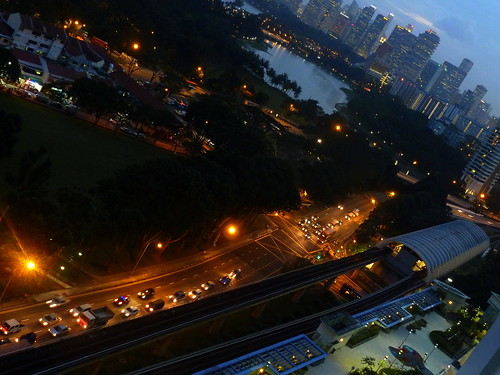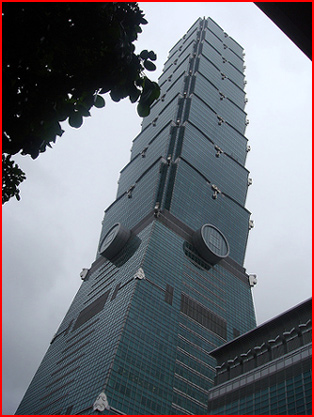For Wired magazine, Rob Beschizza put together an interesting collection of pictures titled “Mile High Skyscrapers and Floating Cities That Never Were.” In contrast, we’ll also look at some of the proceedings of the Council on Tall Buildings and Urban Habitat. But first, the visionary products of several imaginations, considered by Beschizza, whose introduction goes like this:
With the space age entering its crassly commercial phase and science fiction dominated by gritty dystopian visions, you could be forgiven for giving up on the future. But not everyone has. With Dubai’s 800-meter-tall Burj Dubai skyscraper almost complete, starry-eyed visions of tomorrow’s cities are more popular than they’ve been in 50 years.
Here’s a collection of promised skylines we never got to see — and a few that may yet come to be — as seen from the imagined eyes of those who live there.
The collection includes the Illinois, which Frank Lloyd Wright never was able to build; a Moscow skyscraper whose construction only got as far as its enormous base before World War II intervened; various arcologies; proposed mile-high towers in Kuwait City and Jeddah; and the three-mile avenue with gigantic buildings along both sides which Albert Speer proposed for the Berlin city center.
The tallest building ever to boast a complete set of blueprints, Beschizza points out, was a proposed building called the X-Seed, which the Taisei Corporation designed back in the mid-Nineties. It would have exceeded Mount Fuji in height. He also looks at an abandoned North Korean project, the Ryugyong Hotel, which apparently had to be given up because the construction materials just didn’t hold together. Then there was the Ultima Tower, designed by Eugene Tsui, whose footprint would have covered two square miles.
Regardless of the difficulties, other very tall structures have emerged from the imagination into reality. On their website, the Council on Tall Buildings and Urban Habitat gives an overview of the recent 8th World Congress, whose theme was “Tall and Green: Typology for a Sustainable Urban Future.”
It was a record event for the Council, with 954 delegates including more than 50 members of the press in attendance…Amongst the attendees were a number of the most prominent faces in the architecture, engineering and construction industry…. In addition to panel sessions and workshops, attendees were invited to participate in technical tours to local tall buildings and mega projects including the Burj Dubai, now the world’s tallest building under construction…
Held in Dubai, the event drew experts in all aspects of tall building development, from 43 countries. For those who missed it, the website includes a complete list of all the papers and videos available for downloading. These range from “A Vision for the World’s Tallest” to “Engineering the World’s Tallest.” Topics considered by the Congress included all the same matters as would be taken into account with any building, yet with extreme altitude there are unavoidable differences, since certain problems do not grow arithmetically with height, they grow geometrically, exponentially.
The Congress explored everything from aesthetics to economics, looking at all aspects of sustainability, of which there are many, in relation to very tall buildings. How to save material in a tall building structure; how to be both tall and green at the same time. Is elevator technology keeping up with the need for it? What about ventilation? What kinds of energy can be harnessed, and how? What will wind and fire do? What are the options for evacuation in the event of disaster? What’s the psychological effect on the people who live and/or work in incomprehensibly elevated spaces? What kind of noise will the building require them to put up with? Papers were presented on “Nonlinear Dynamic Earthquake Analysis” and on hydraulic dampers to absorb seismic shock. One presenter issued a call for tall buildings to become less iconic and more specific. Another explored the concept of “the Vertical Farm: the sky-scraper as vehicle for a sustainable urban agriculture.”
There seems to be spirited debate in some quarters, over how high a building can or should be. Any additional thoughts are welcome here.
SOURCE: “Mile High Skyscrapers and Floating Cities That Never Were” 04/17/08
photo courtesy of leonghimwoh , used under this Creative Commons license


0 Responses to “Very Tall Buildings, Imaginary and Real”